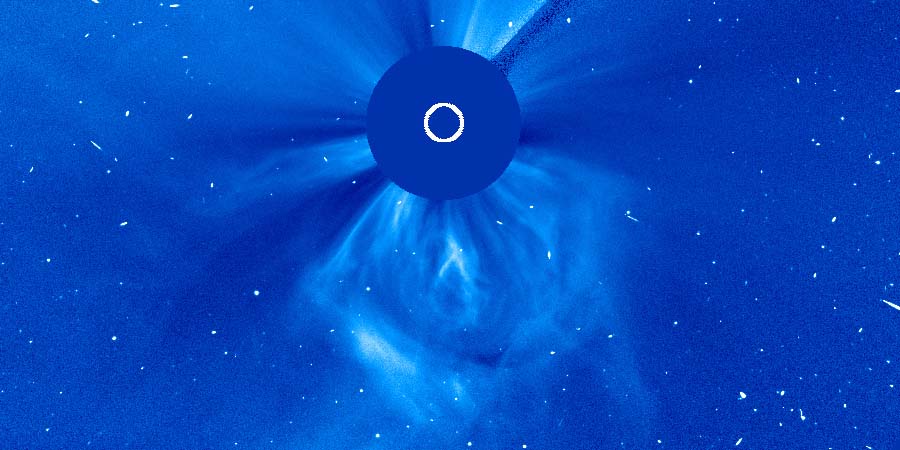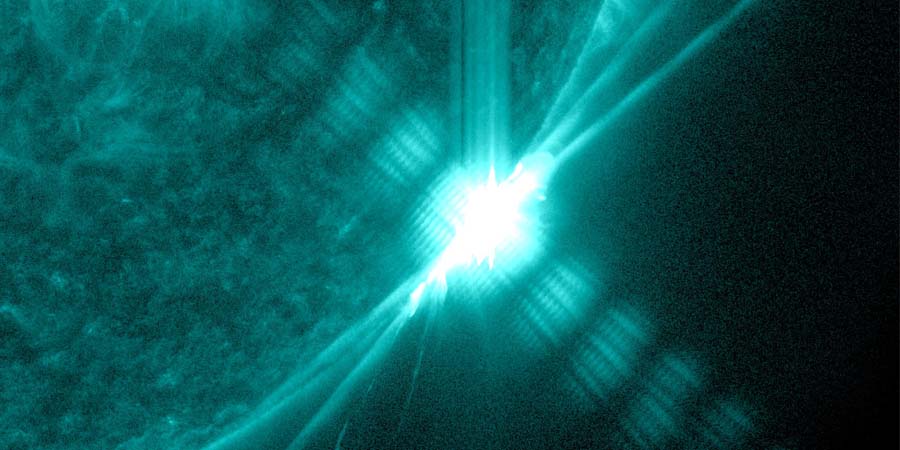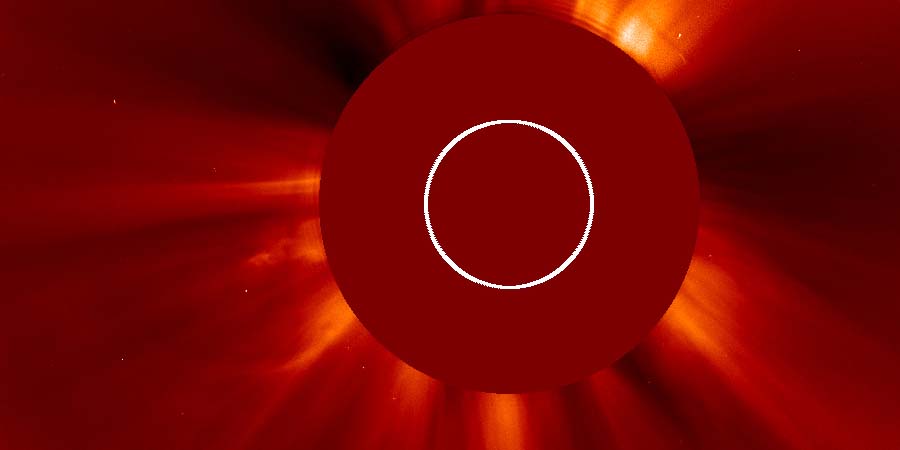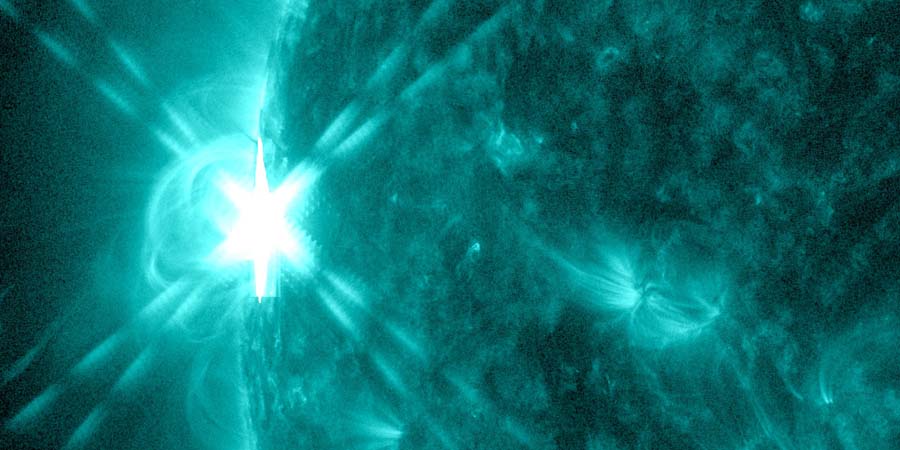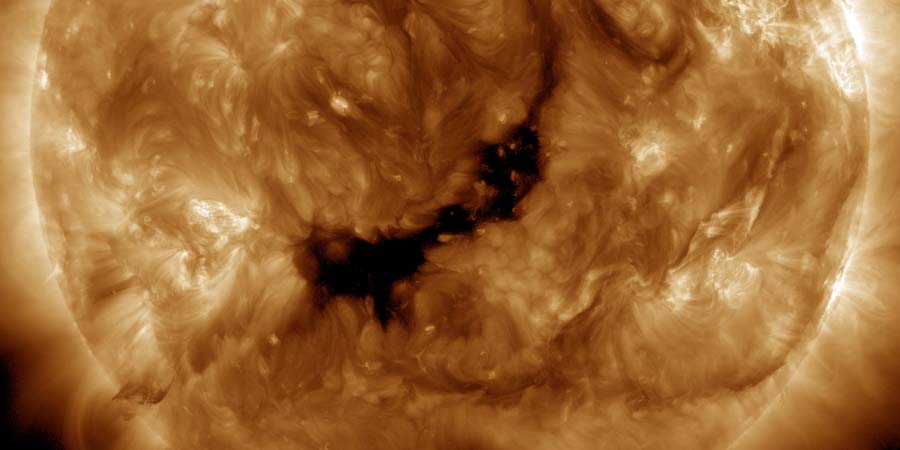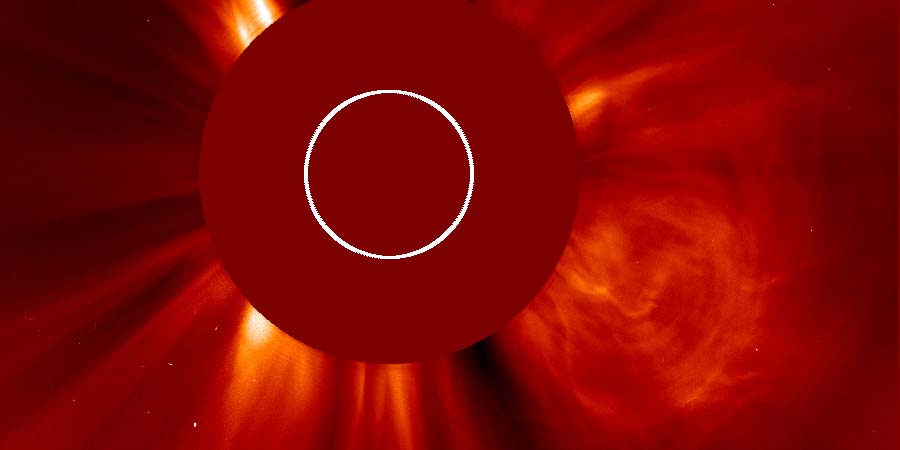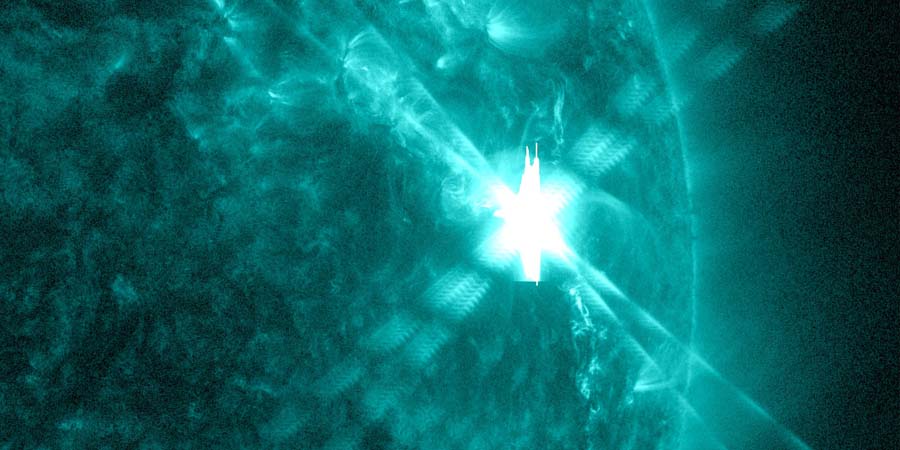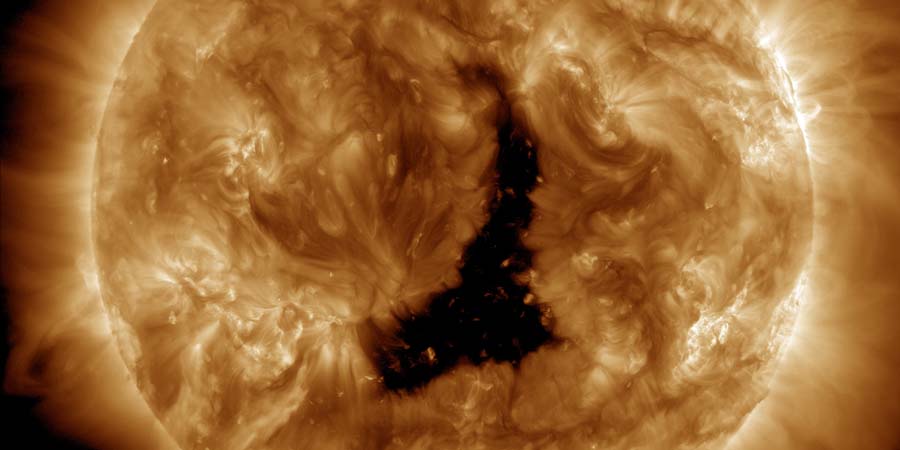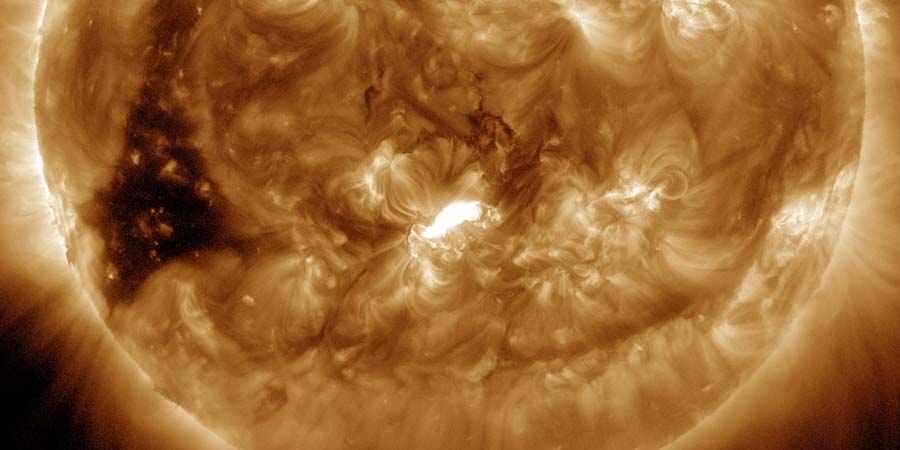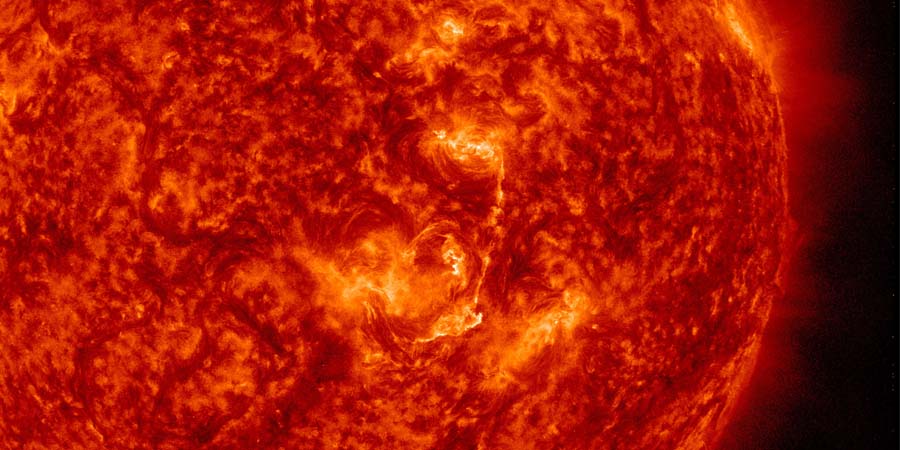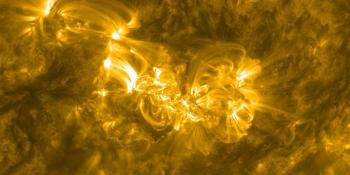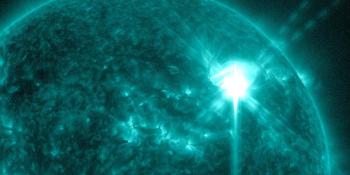Latest news updates Subscribe
New day, new coronal mass ejections to look at!
sabato, d.C. febbraio PM 18:34 UTC
Another day, another big coronal mass ejection... but this time it came from the south-east limb! The coronal mass ejection from yesterday's X3.3 solar flare was impressive but we have yet another fine specimen to look at. An incoming sunspot region erupted with a M3.4 solar flare that peaked at 03:54 UTC. This coronal mass ejection is just like the coronal mass ejection from the X3.3 solar flare not aimed at our planet.
X3.3 solar flare
venerdì, d.C. febbraio PM 18:15 UTC
Departing sunspot region 3575 which is already behind the south-west limb said goodbye this afternoon with a major X3.3 (R3-strong) solar flare which peaked at 13:14 UTC.
G2 geomagnetic storm watch
domenica, d.C. gennaio PM 19:41 UTC
A moderate G2 geomagnetic storm watch has been issued by the NOAA SWPC for Monday, 22 January and Tuesday, 23 January. This is due to the expected arrival of a coronal mass ejection launched by a eruption south of sunspot region 3557 early yesterday morning.
Major X5.0 solar flare
lunedì, d.C. gennaio PM 15:16 UTC
Happy New Year to all of our visitors and fans! How do we celebrate that? With a major solar flare of course! The Sun was kind enough to produce some spectacular fireworks yesterday just two hours before UTC midnight. It was a major X5.0 (R3-strong) solar flare that peaked at 21:55 UTC. Sunspot region 3536 is the source of the eruption which is just rotating into view on the east limb. This is actually the return of sunspot region 3514 which produced an X2.8 solar flare during the previous solar rotation.
Coronal hole faces Earth
venerdì, d.C. dicembre PM 18:09 UTC
Solar activity has been fairly quiet the past few days as there are currently no noteworthy sunspot regions on the earth-facing solar disk. However, a different kind of interesting solar feature is currently staring right at us on the earth-facing solar disk and that is a trans-equatorial coronal hole.
Earth-directed CME, M6 solar flare
venerdì, d.C. dicembre PM 19:21 UTC
Yesterday's X2.8 solar flare (which is the strongest solar flare since 2017) came from sunspot region 3514 which is rotating towards the west limb. It became clear quite soon following the event that it would be eruptive but is there a chance that the resulting coronal mass ejection (CME) arrives at Earth? Keep on reading for the answer!
Major X2.8 solar flare
giovedì, d.C. dicembre PM 17:34 UTC
A major X2.87 (R3-strong) solar flare just peaked at 17:02 UTC. Sunspot region 3514 is the source of the eruption.
Coronal hole faces Earth
sabato, d.C. dicembre PM 15:37 UTC
The geomagnetic storm which was the result of a coronal mass ejection impact from the M9.8 solar flare has now subsided. The north-south (Bz) component of the interplanetary magnetic field is pointing northwards which is preventing any kind of geomagnetic unrest at the moment. We did peak at the strong G3 geomagnetic storm level which caused some very nice auroral displays at lower latitudes than usual. So does that mean we need to wait for weeks and weeks before the next geomagnetic storm? No! A very large coronal hole is currently facing our planet sending a high-speed solar wind stream towards us.
M9.8 solar flare with earth-directed CME
mercoledì, d.C. novembre PM 17:24 UTC
A near X-class (M9.8) solar flare (R2-moderate) erupted yesterday at 19:50 UTC. It was sunspot region 3500 which was pretty much on the center of the earth-facing solar disk at the time that was the source of this eruption.
Coronal mass ejection impact expected on 11 November
venerdì, d.C. novembre PM 16:17 UTC
A full halo Coronal Mass Ejection (CME) left the Sun around 12 UTC on 9 November. The CME was the result of a filament eruption close to the center of the earth-facing solar disk.
Ultime notizie
Ultimi messaggi dal forum
Supporta SpaceWeatherLive.com!
Molte persone vengono su SpaceWeatherLive per seguire l'attività del Sole o sapere se ci sia la possibilità di vedere l'aurora, ma a maggior traffico corrispondono costi maggiori. Considerate una donazione se vi piace SpaceWeatherLive così che possiamo mantenere online il sito web!

Notizie sul meteo spaziale
| Ultimo brillamento X | 2024/05/08 | X1.0 |
| Ultimo brillamento M | 2024/05/08 | M9.7 |
| Ultima tempesta geomagnetica | 2024/05/06 | Kp5 (G1) |
| Giorni senza macchie | |
|---|---|
| Ultimo giorno senza macchie | 2022/06/08 |
| Media mensile Numero di Macchie Solari | |
|---|---|
| aprile 2024 | 136.5 +31.6 |
| Last 30 days | 163.9 +73.1 |
